When we moved into a new home, it was very exciting and scary at the same time, but we also knew that we had an opportunity to do major jobs before moving in. After all, once we were settled in the house, it was going to be very inconvenient, very difficult, and very costly to do such construction work as it would clearly disrupt our lives.
Naturally, we wanted to get everything done to the house prior to truly calling this place a home, but the reality was that we didn’t have enough money to do it all so we had to make priority calls.
Indeed, you’re really trading the upfront cost of work (and delaying your move-in date) against the rising cost of labor, materials, and maintenance issues down the road.
However, it’s hard to know what jobs to prioritize, especially if you’re going into this without lived experiences giving you the benefit of hindsight.
Well, now that we’ve got the benefit of hindsight, we can say that there were certainly things we would have done differently (in addition to the things that we did do right).
So in this write-up, we share these priority calls that we would have done BEFORE moving into a home so that you may learn from our experiences when it’s time for you to make these kinds of decisions.
Priority #1 – Re-pipe

Unless you’re moving into a brand new house, chances are that you’ll want to redo the plumbing to ensure that old pipes behaving badly won’t mess you up down the road.
In our case, we moved into an old home, and this was the very first thing we did, especially since the dry wall was mostly down so access to the plumbing was a lot easier.
Since we knew that most of the piping were old galvanized steel pipes (prone to rusting and calcification), we opted to go with copper.
While we could have done a PEX (a type of hard plastic) re-pipe, which plumbers certainly appreciate, I guess we’re old school in that we know copper is a robust material and it buys us around 20 years before pinhole leaks may start emerging.
Besides, metals are getting more rare and expensive so it made sense for us to do this when we did.
Now another benefit of prioritizing the re-pipe is that we afforded ourselves the ability to position the water softener and RO (reverse osmosis) filtration system into the garage for easy access and visibility (should problems come up).
At the very minimum, if plumbing problems arise, they’re most likely going to occur in the garage instead of inside the living areas of the home, which would be more sensitive to water damage.
Moreover, getting the re-pipe done first also set us up for the inevitable bathroom and kitchen remodel, which both rely on the plumbing system being in place.
Priority #2 – Electrical Work

When the walls are open, this is also the time to get any electrical work done.
Once the walls are up, then you’ll have to break the walls or cut holes into them to get at the wires, and it gets messy (and more expensive) real fast.
Indeed, we learned this the hard way when we turned a dining room into an office, but we kept tripping breakers since the sockets were on the same circuit as the rest of the house!
Given the opportunity to do it over again, we should have capitalized on the opportunity to:
- upgrade the wiring (we still have older wiring from the 60s and 70s that is both brittle and prone to fire)
- add more sockets (especially in storage spaces), which is also a hedge for cheaper electricity due to solar down the road
- distribute the load so we’re less likely to cause abrupt outages in the house (let alone make the home more fire prone).
This is also an opportunity to upgrade the electrical panel, which is another move we could have made to lay the ground work to allow us to go solar down the road.
I prioritized electrical work prior to the kitchen and bath remodel because it’s much harder to get the electrical work done if those jobs were complete since it may involve breaking walls again.
Priority #3 – Kitchen Remodel
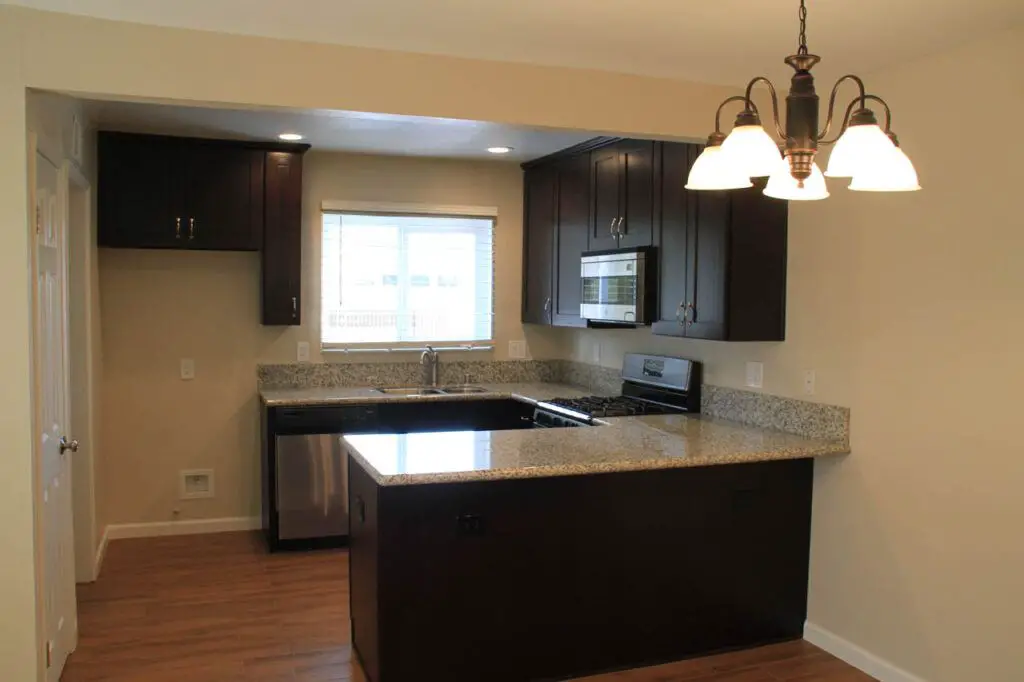
If you ever pay attention to those home remodeling shows you see on HGTV, you’ll see that this is probably the highest priority job that they do.
In fact, on just about every show, it involves redoing the kitchen.
The main reason why is that you get the greatest return-on-investment (ROI) on a good kitchen remodel, especially if you’re trying to position yourself for selling your home down the road.
Now in our case, the kitchen is the room we probably spend the most time in (especially if you cook), and so it stands to benefit our mental health and comfort the most by doing this job right.
This might also be the most “fun” part of the job because we (actually Julie) got to make a lot of decisions concerning the aesthetics.
Such decisions included the choice of counters, cabinets, the island, the sink size, etc.
While there’s a lot of aesthetic (i.e. nice-to-have) decisions to be made, which Julie really got into, make sure you don’t skimp on the necessary functional aspects of the kitchen (especially the plumbing and electrical).
For even the prettiest kitchen is going to result in a lot of re-work as well as wasted time and money if it doesn’t do its primary function of being a food preparation space.
Priority #4 – Bathroom Remodel

Closely following the kitchen remodel in the priority list is the bathroom remodel, because there’s also a high return on investment here (though perhaps not as visible as the kitchen).
Nevertheless, the bathroom is also a very frequently-used room, but more importantly, this room serves a very key function in managing moisture.
After all, a bathroom is really like a rainforest as it’s steamy (from the hot water showers) plus there’s always flowing water (from the sink, toilet, and shower/bathtub).
Unfortunately, a bad bathroom remodel job can lead to mold and undermining the home’s structural integrity.
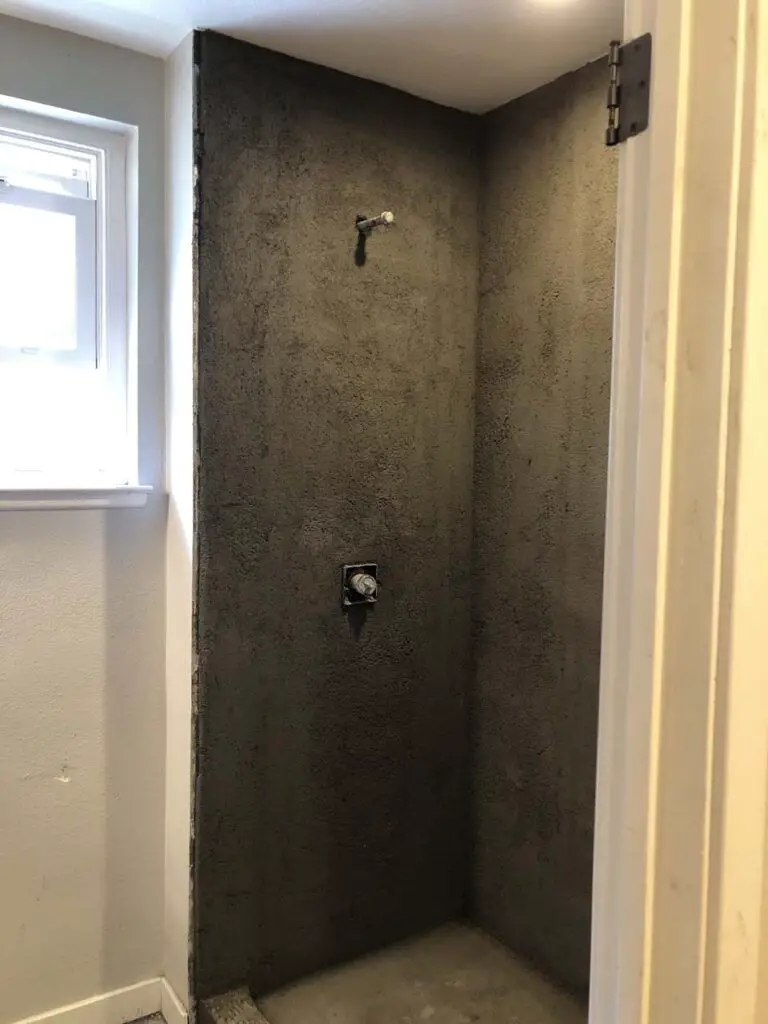
And we unfortunately had to deal with the consequences of a bad bathroom remodel that forced us to do it again at even higher cost!
In hindsight, we should have done our bathroom remodel with the mud float technique instead of backer boards, and that would at least make our bathroom last for decades (maybe even the rest of our lives).
Moreover, we also should have added a socket by the toilet so we could have put in a bidet (you know the kind you tend to see in Japan), which can save on toilet paper while also making the experience way more comfortable.
These days, when it’s cold in the house, the toilet seat is always very cold so we always have to endure that cold shock when we first sit down, especially in the Winter months!
Priority #5 – Tenting
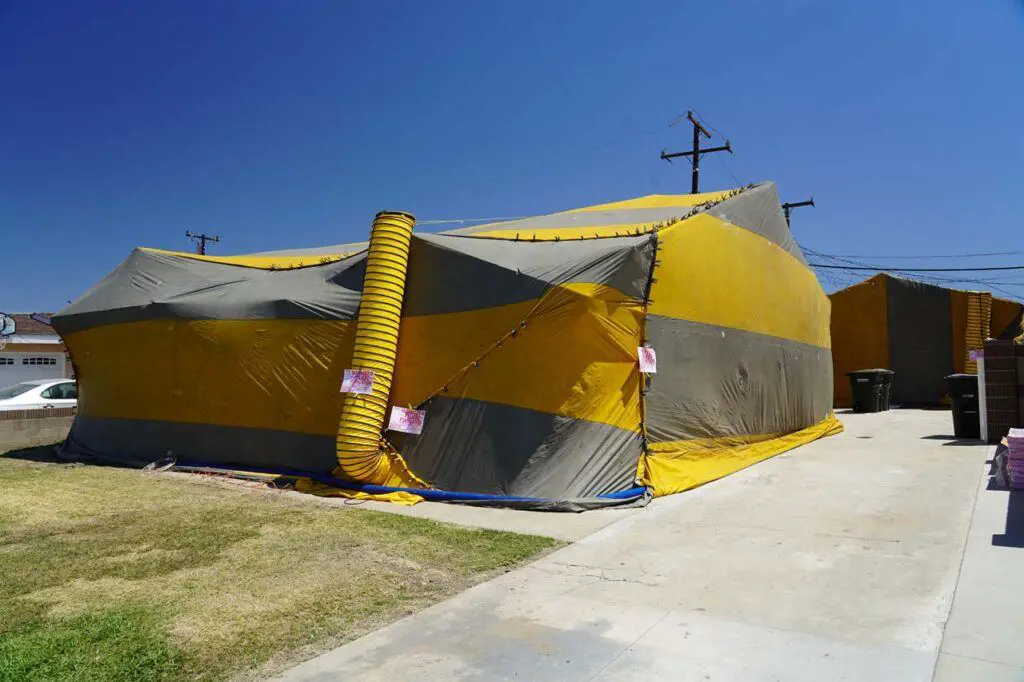
Of all the jobs to do before moving in the house, this was our single biggest regret of not doing!
To make a long story short, we took the seller at their word and believed that the termite treatment they did was enough (which even the home inspector bought off on).
However, fast forward 7 years, and we uncovered a lot of damage that was done by termites that was only uncovered when we had to re-roof the house.
Indeed, what you don’t see will hurt you!
So now we always make it a point to recommend to friends that before they move into a house, they should tent it.
Its cost is modest compared to the bigger remodel jobs mentioned above, and you don’t have to go through the trouble of bagging your perishables in air-tight plastic while being out of the home for at least 3 days.
Besides, if you’re doing it when you’re not moved in, you’ll have less to worry about concerning home theft on the job.
Nevertheless, the benefit is that you’ll eradicate termites (and any other pests) that you don’t see between the walls and already inside your beams and studs.

If anything, it resets the termite life cycle, and you’ll buy yourself at least 7 years or so before you have to consider treatment or tenting again.
Moreover, after tenting, you’re in better position to spot new infestations as they happen, and only then would spot treatments be effective.
But just to give you an idea of how effective tenting a house was for us, we once lived in a house that was infested with both subterranean and drywood termites for at least 10 years or even more before moving in (unbeknownst to us at the time).
However, we eventually made the wise decision to tent, and over nearly 7 years later, after demo’ing the house, we saw the mud tube evidence from the subs but none of that infestation was active all this time!
In fact, the termite damage was very limited, and the wood replacement on that house was far less than on our current home, where they destroyed a lot of the roofing, the top layer, a lot of the fascia, and a few beams and rafters.
Heck, we’re still crossing our fingers that the weakened top layer won’t result in major damage on the next earthquake, especially since fixing it is major work involving removing a chimney and really messing up the living room!
Priority #6 – Structural Changes
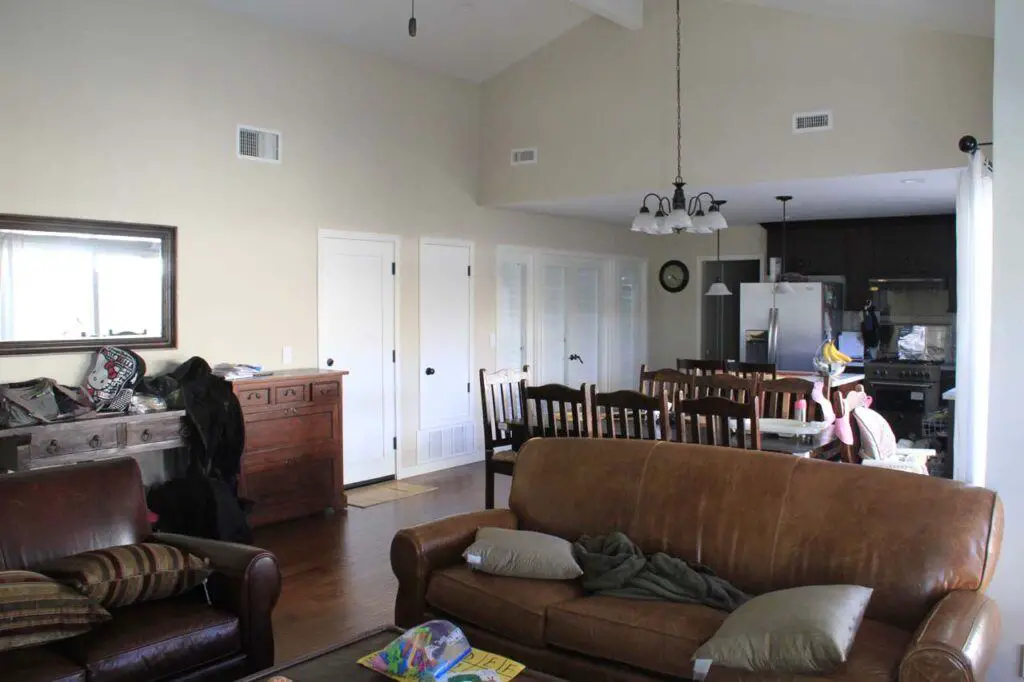
Although this is a huge job to undertake, I put this at a lower priority because most of the benefits of doing this job are primarily aesthetic nice-to-haves as opposed to necessities.
After all, you could argue that opening up the floor plan, expanding closets, changing the bedroom layouts, adding rooms, having a second story, etc. don’t really serve any real functional benefit.
However, they certainly make a world of difference in the long term concerning comfort, mental health, etc.
For example, if you open up the floor plan, you now have space to give your kitchen an island while also making the home seem a lot bigger and less confined.
Come to think of it, the real estate industry always talks about a home having “good bones”, which means the structural skeleton of the house.
These are things that are hard to change, especially once you’ve moved in.
That’s why this can be a great opportunity to give your home those “good bones” so you’re less limited on what you can do to the house – both now and down the road…
In any case, if you have the time and the budget to undertake making structural changes to the house, then that time before moving in is the time to do it.
In fact, I would even put this at the very top of the priority list because you’ll have to take time to pull permits, get city inspectors and engineers to examine and approve your job, and just the sheer time it takes to even do this kind of job.
And this doesn’t even include the time you’ll want to make to be there and ensure the job is done right.
Priority #7 – Flooring

Even though this is another job that is more for the aesthetics, this is something that I know we cared a lot about because you’re walking on your floor in your home all the time.
This is why I’m putting this lower on the priority list, but like with structural changes, it definitely changes the home experience if done right.
So if you do find yourself wanting to control the flooring like we did, then this will be a job that you don’t want to have done while you’re living in the house already.
Indeed, if you find yourself trying to get work done before moving in, then you mind as well get the flooring done while the house is already a construction site anyways.
That said, you’ll still want to get all the major work done listed above before you get into the flooring because it can easily get messed up (especially if you’re tiling) if there’s still construction work going on (not to mention all the dust that’ll get on it).
Just to give you an idea of how messy things can get, we had to redo the flooring of the bathroom after its remodel.
And that job already made the house dusty while disrupting our lives (and we’re just talking about one room here) so imagine how much messier it gets when you’re talking about doing the flooring of the whole house!
Priority #8 – Asbestos Removal
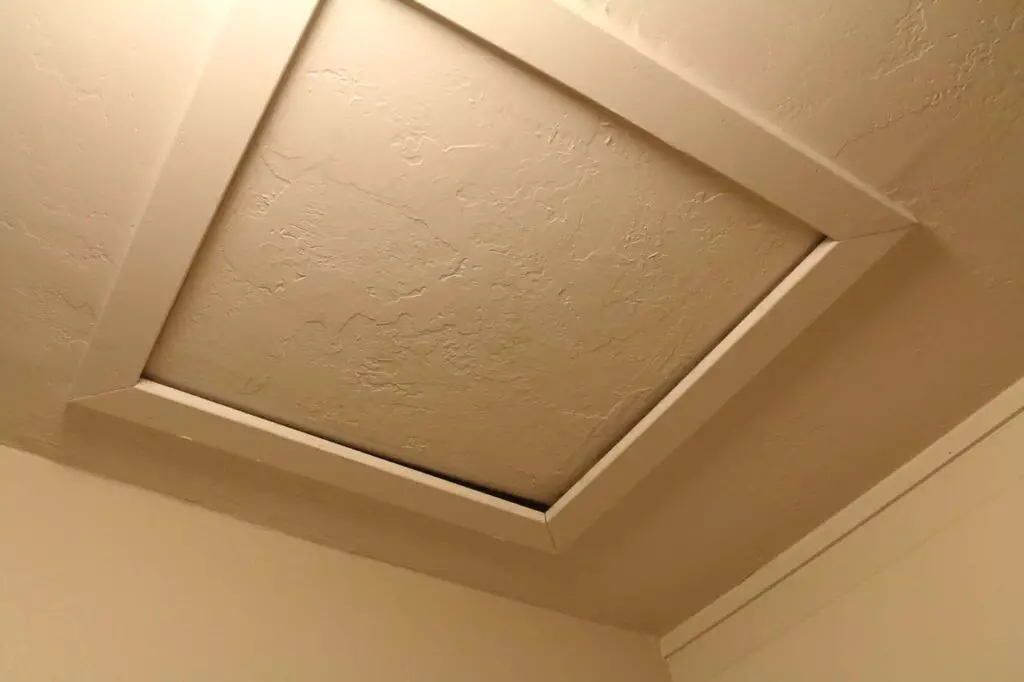
Although it wasn’t cheap, this was one priority call that we made for the sake of our physical health as well as enabling us to upgrade or replace the central air system if (when) that time comes down the road.
And we’re glad that we made this call!
The issue was that our ceilings had popcorn (a kind of rough texture for soundproofing), but they were made of asbestos.
Asbestos is a cancerous material that is most impactful when it’s perturbed and in the air (like if you scrape some of it off on accident).
This is the kind of stuff you don’t want in your lungs because the fibers stay there, and too much of it causes conditions like mesothelioma.
Besides, if we have any duct work or cental air work, we need permits for those, and the city will make us remove the asbestos before the permit can be approved.

Anyways, you’ll definitely want to get this job done before moving in (mostly likely when you’re demo’ing or demolishing) when the house is already a mess.
There are asbestos removal specials in hazmat (short for hazardous materials) suits to contain and remove the stuff before work on the house can resume without putting other people (let alone yourself) at risk.
Now granted, if time and money is limited, you could live with the asbestos as long as you don’t perturb it (I grew up in a house with popcorn ceilings for nearly 20 years).
And central air isn’t totally pressing because you can always get a heat exchanger or a “room AC unit”, which is actually way more efficient though they only benefit one room instead of the whole house.
Honorable Mentions
Now there are other important jobs to be done to the house, but since we couldn’t do it all, these were the things that we punted until later.
That said, when we did embark on these jobs after we had moved in, that opened another can of worms of escalating costs when we uncovered other issues that were hidden from us all these years!
Nevertheless, a home is always going to have issues, but these are the other things that would have been great to do upfront, but we eventually had to wait until the opportunity arose again to finally addresses them…
Re-roofing

I tend to think that this is one of the most important jobs to be done for a home.
After all, a leaky roof is a recipe for termites, mold, other pests, and eventually weaking of the home’s structural skeleton.
So why did we punt this until after we had moved in?
Well, because this work takes place on the outside, it shouldn’t stop you from moving in while the work is going on.
Heck, we were still able to to live in the house while this work went on (though they certainly left a mess in the attic and garage).
With a good roofing company, they can get the roofing done within a week (permits, demo, construction, and all).
That said, this job is not cheap (you’re looking at around $20k though this depends on inflation and unexpected wood replacement costs after demo).
Nevertheless, this work also sets the stage for going solar and really reducing our electrical bills (or practially eliminating them in our case)!
Sidings
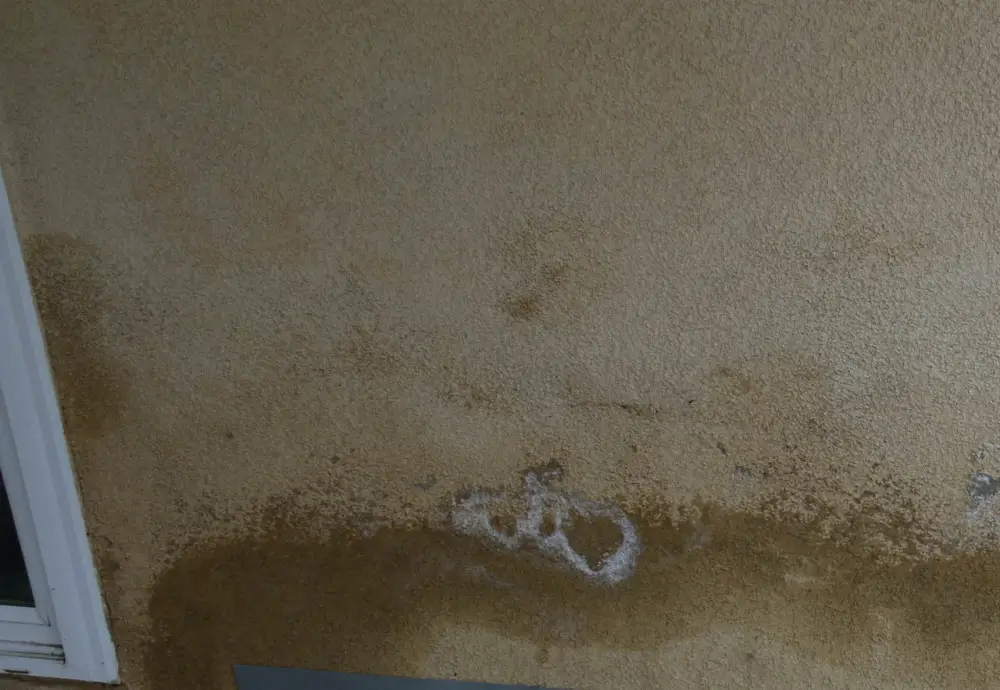
Another job to be done to the outer “skin” of the house is the outer walls on the sides of the house – particularly re-stucco’ing and installing weep screed.
Indeed, this job is all about managing the elements (especially water), and making sure the house can dispel the water went a long way to preventing mold or other complications of moisture staying within the house’s walls.
Another benefit that we learned about when we re-stucco’ed the house was that it stopped an ant infestation (and the odd cockroach) that kept coming back year after year.
Back then, we had a stucco that was so old and weathered that it became crumbly and bulging, and there were even traces of mold that were starting to appear in the underlying wood studs.
Apparently, redoing the whole siding which sealed up the cracks and openings that were once there meant that the critters had to find another (less obvious and more difficult) way in.
In any case, this is a job that can be done after we’re already living in the house, which is why it’s not something we absolutely have to do prior to moving in (though it doesn’t trivialize how important this job is)!
Closet Organizers
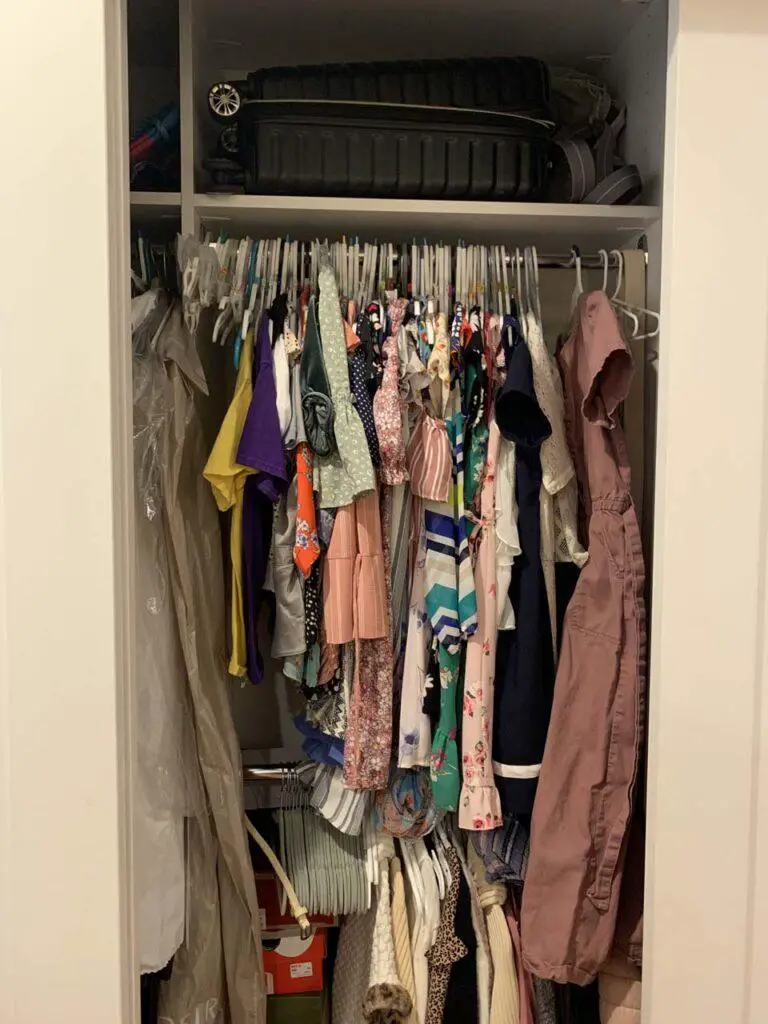
This may seem like a superfluous job, but you could have a big closet and yet still feel like you’re running out of space.
Or, you could have limited closet space while restructuring the layout of the house is too costly to undertake.
So the next best thing to do would be to install a closet organizer, which enables you to get more storage out of your limited closet space.
That way, it might be a way cheaper way to increase your closet space while also making it easier to find your stuff due to the improved organization.
Anyways, this kind of job can definitely be done after you’re moved in.
Lighting
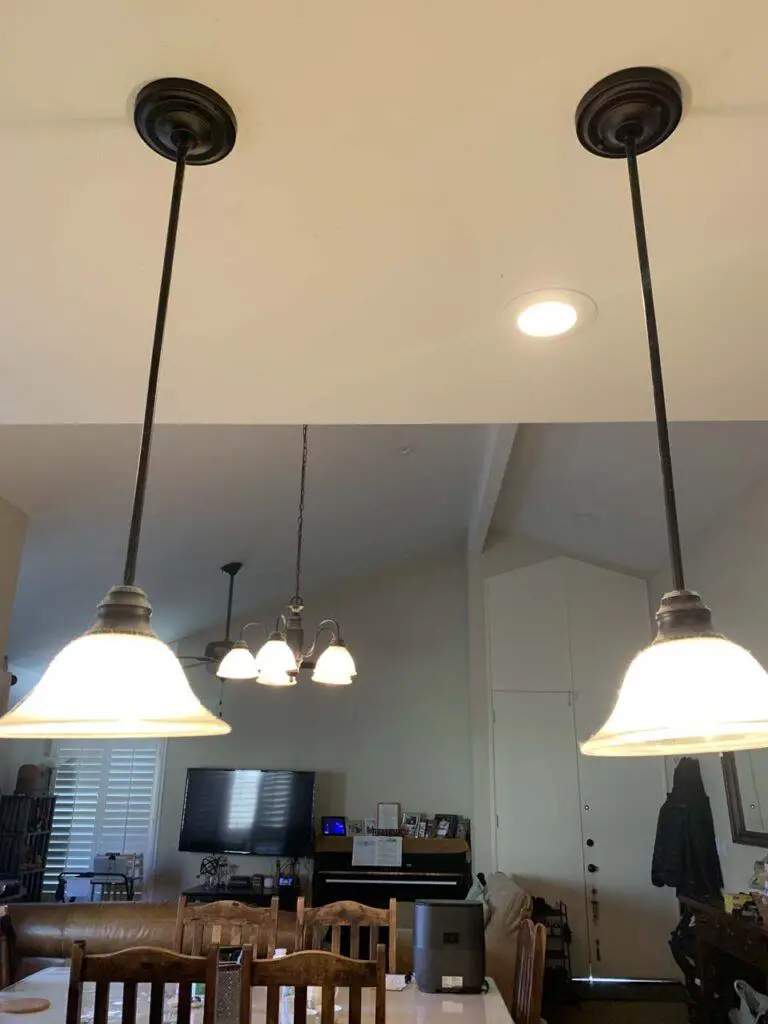
If you’re getting electrical work done, this is an opportunity to put in the kind of lighting you want – whether it’s chandeliers, recessed lighting, etc.
However, once the dry wall is up and the electrical wiring is done, it’s harder and more limiting to make these kind of changes.
That said, this is lower priority because as long as you’re getting lighting and it works, then it’s serving its purpose.
But like with flooring and redoing the home layout, sometimes, it’s the aesthetics that makes the difference between a home you enjoy living in versus one that feels more like a prison.
Painting
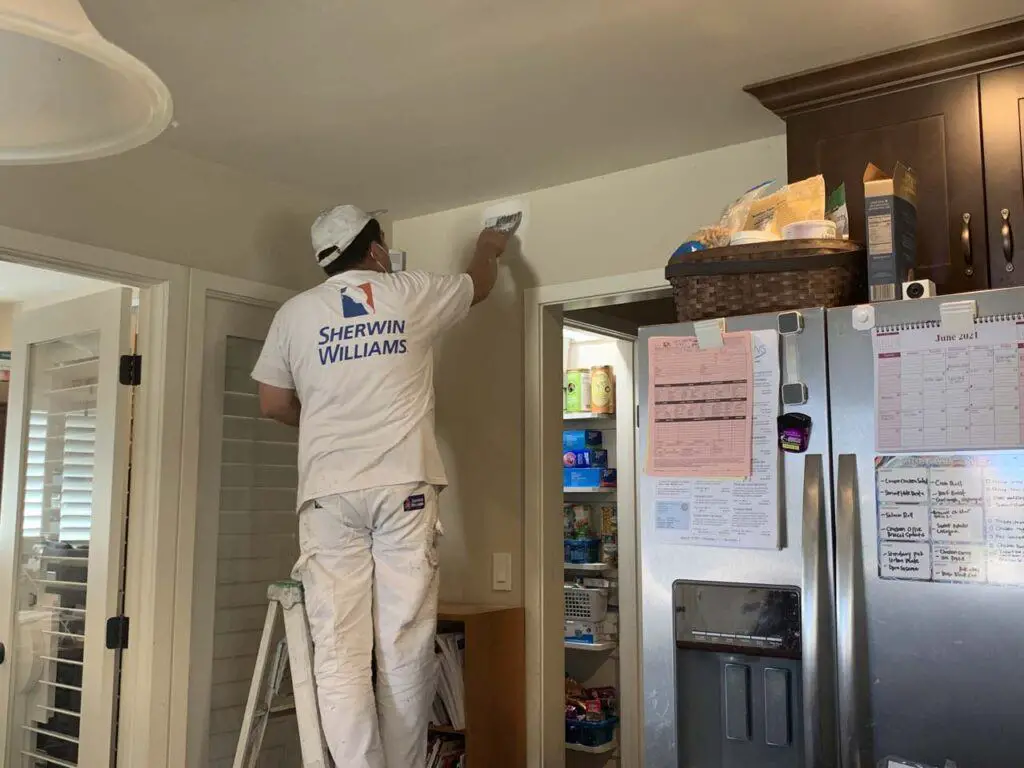
Only after the interior work has been done should you then consider painting the interior of the house.
The paint serves an underappreciated aspect of living in a home because not only does it set the mood (and you see it everyday), but it also helps manage some of the gunk that flies around the interior.
For example, there’s more oily and glossy paint to be used for the kitchen and bathrooms due to the exposure to grease as well as moisture, whereas you can get by with more ordinary paint in the bedrooms and hallways.
A good painter will know how to properly sand and apply the coats (so the paint will last for many years) while also knowing which paint to use where.
Naturally, you don’t want to jump the gun and paint the house when there’s still work to be done as it should only be done at the end.
Now in addition to interior paint, the exterior paint job is also critical though it shouldn’t stop you from moving in.
After all, a good outdoor painting job can seal up small holes and cracks, which makes it harder for insects (especially termites) to get in the house.
Conclusion

The bottom line is that the work you’ll want to do before moving into a home has to do with effecting changes that are otherwise hard to do once the permanent fixtures and structures (i.e. walls, plumbing, flooring, etc.) are in place.
Notice that the highest priority tasks pertain to management of water because it’s the one thing that can skyrocket your maintenance costs when the water is not managed (e.g. leaks).
The rest of the jobs (e.g. electricity, layout, etc.) primarily have to do with setting yourself up for future jobs (e.g. solar, tankless, batteries, etc.) that can truly turn your house into a venue for making a lifetime of memories.
Indeed, a home is something you spend most of your life in, and doing the most important jobs upfront before moving in will give you a better chance of being on top of issues before they truly become homeowner headaches!


I don’t own a house yet but it is one of my goals this year to have one. There are things I never thought about like thinking that there are some vital jobs to do before starting to live in the new house. This article has been an eye opener. After reading this article, I see why certain jobs have to be done before you start staying in the house. I noted safety issues for example electric wiring. Materials prone to fires should be changed. I also note why the floor should be done last. big logic in there. Thanks a lot for this extensive work!
Yeah, a lot of things blindsided us, which was fodder for this write-up. Glad you found it useful and thank you for your input!
There is so much to consider when buying an older house. In 2016, we bought the house we are currently living in that was built in 2016. Fortunately for us, the basement had just been waterproofed by a reputable company with a lifetime warranty. There were other issues with the house that we didn’t know about, such as the bathroom floor was sinking due to water damage and the weight of the old tub on an unsupported floor. We didn’t have the time luxury to wait for most repairs, or the budget. We were living in an apartment and didn’t want to renew the lease. Nor could we afford the rent and the new house payment while we waited for any repairs. It was really a race with time for us. We remodeled the bathroom a couple years ago. There are other structural issues that need to be taken care of as well. Like you said, there are always problems with the house. Thank you for providing your knowledge of projects that should be taken care of before moving in.
Glad to hear that it seems like you got things sorted on your home. Yeah, the thing about homeownership is that there are a lot of ugly surprises that cost you a lot of money, and they’re never convenient (like in your case where you had to race an expiring lease and get big jobs done before moving in). Unfortunately, most of my knowledge on the subject comes from personal experience, and I’d imagine that’s the case for a lot of homeowners. Thanks for sharing your story!